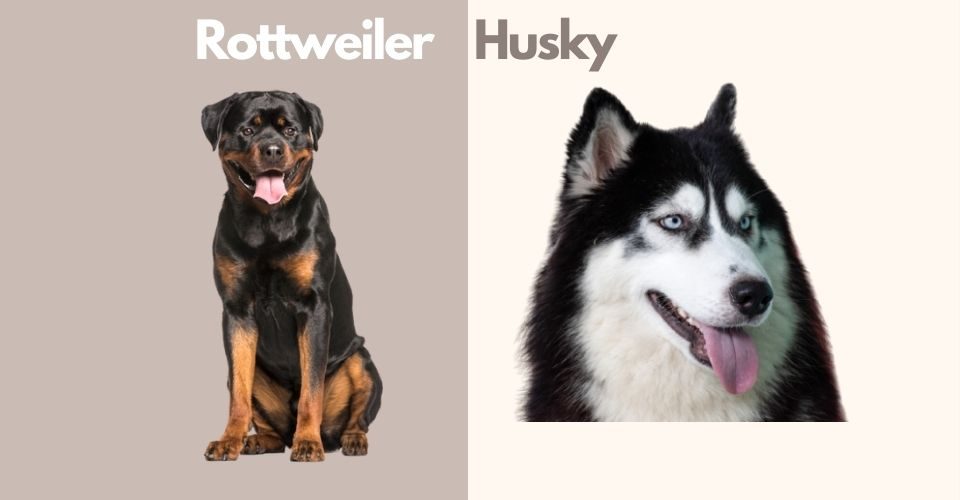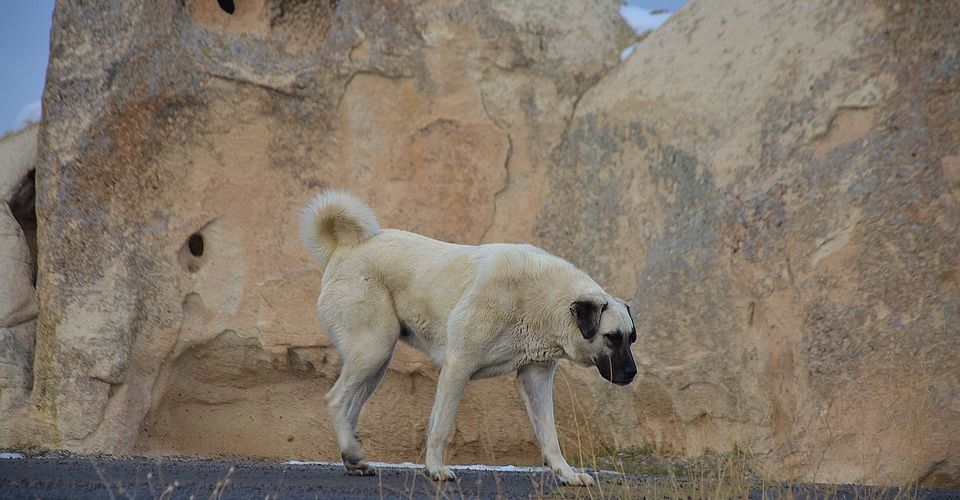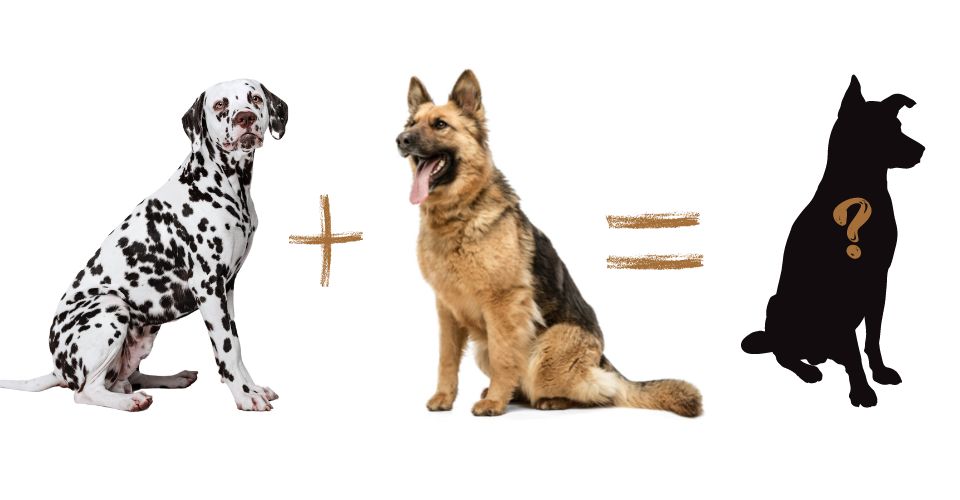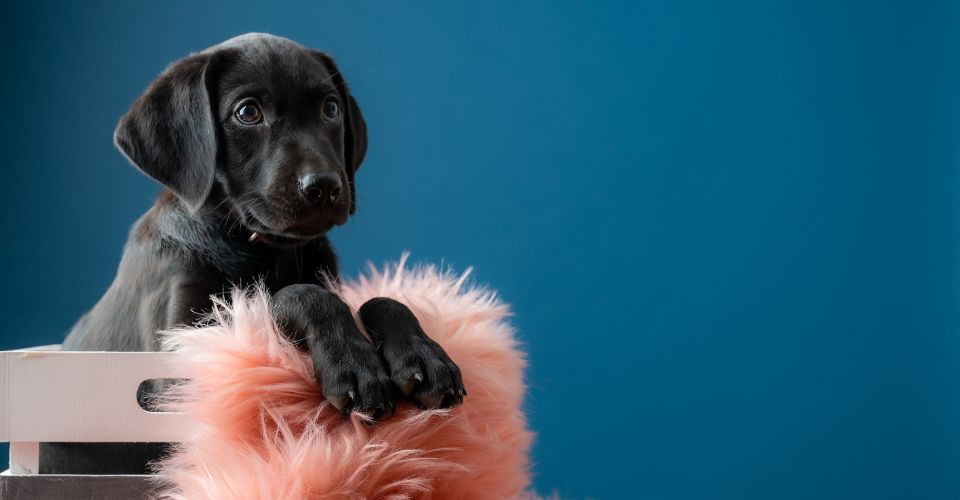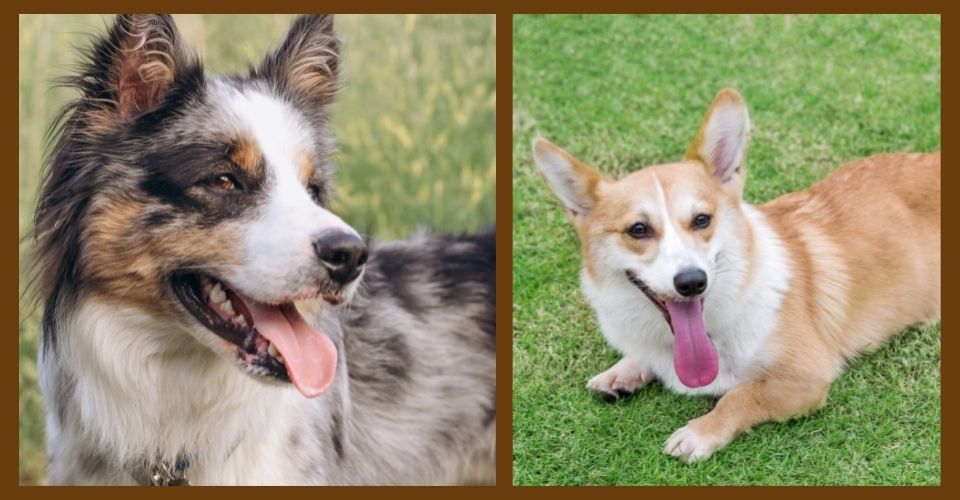Rottweiler Husky mix, also known as Rottsky, is a designer dog breed intentionally developed by mixing the world’s two most athletic canines—Rottweiler and Husky. They inherit the desirable characteristics from both of their parents. If you are fascinated by this magnificent breed and want to know if it is the right pick for you and your family, then you are at the right place.
In this article, we are going to discuss everything that you need to know about the mix between a German guard dog, Rottweiler, and the Russian sled dog, Siberian husky.
But before we move further, you need to understand that, like other mix-breeds, individual traits or Rottsky puppies may vary depending upon how much they have inherited from each parent. However, Rottskies are high-energy dogs who seem to never get tired. Thus they are better suited for houses with ample fenced outdoor space, where their Rottsky puppy can wander around freely.
Rottweiler Husky Mix Breed
Rottweiler Husky Mix Breed Overview
Height: 20 to 26 inches
Weight: 55 to 95 pounds
Lifespan: 8 to 14 years
Color: Black, red, gray, tan, brown, cream, white
Temperament: Highly energetic, protective, vocal
Suitable for: Households with fenced outdoor space, outgoing parents
Other names: Rottsky, Rottie and husky mix,Rott Husky mix, Husky Rottie mix
|
Adaptability: |
|
Sociability: |
|
|
Kids Friendly: |
|
Shedding: |
|
|
Trainability: |
|
Energy: |
|
Rottweiler Husky Mix Appearance
Like their parents, Rott Huskies tend to have a compact and muscular buildup. That said, how they look may completely depend on how much they have inherited from each parent. For instance, if it has inherited more from its Rottweiler parent, it will have a bulkier buildup with a short and wide muzzle and a broad head like Rottweilers. Conversely, if the Siberian parent is dominating the genetic makeup, it will be slightly longer and leaner with an average-size head and tapered muzzle.
They come in a variety of colors like black, brown, red, grey, cream, white, and sometimes the combination of any two. The color of their nose will either be black, brown, or isabella. However, the coat differs from dog to dog as both its parents have double coats but with different textures. Usually, Rottskies have normally dense, medium to long-haired coats.
Rottskies’ eyes are known to be one of their most striking features. Their eyes are almond-shaped and usually come in either blue or brown and sometimes heterochromia. It means that sometimes this mixed breed will have two different colored eyes or a mix of two colors in both eyes.
Rott Husky has erected triangular ears, and in some cases, it has sloppy ears that fold down depending upon the lineage.
Rottsky Temperament
Like their parents, Rottweiler Husky mix dogs are loyal, playful, and protective dogs. They inherit the protectiveness of the German dog—Rottweiler—and the playfulness of the Siberian doggo—Husky. Thus they are very protective of their owners and that of their belongings. They are high-energy dogs with a highly active and athletic lifestyle, making a great choice for outgoing parents.
Rottskies are a delight to be around. They never miss a chance to show their affection to their loving owners. They make great companions and family dogs as they get along well with children. Having said that, you should never allow your Rottsky to interact with your small children unsupervised. Given their huge size and active nature, they may knock over your kid while playing.
When it comes to strangers, Rottweiler Husky mix dogs can be a bit standoffish, especially at an early stage when they are determining if it is a friendly stranger or a potential threat.
While bringing home a Rottsky puppy, you should keep in mind that they are prone to developing separation anxiety and behavioral issues when left alone for a long time or not getting ample physical exercise.
Coat of Rott Husky
Both Rottweiler and Husky have a double coat but still are a lot different from each other. The Rottweiler’s coat is short and glossy, lying flat against their bodies, while Huskies have coats f medium length, protecting them against the cold and harsh weather conditions. The coat of Rottskies can lean towards one of its parent breeds.
Rottsky coat can be black, red, gray, tan, brown, cream, and white.
Is Rottsky Hypoallergenic?
No, Rottsky is not a hypoallergenic dog. Both of their parents are considered heavy shedders as they have a double coat and shed throughout the year.
While many designer breeds are hypoallergenic, this is not the case with Rottskies. So, if you have pet allergies, you may want to reconsider getting a Rottsky puppy. Even if you don’t have any pet allergies, you may still want to think twice before bringing home a Rottweiler Husky mix dog, as it would require proper maintenance and grooming to get rid of all the dead hair and dander.
Grooming of a Rottsky
The grooming requirements of a Rottsky will depend on its coat. Three to four grooming sessions will be enough if it has the characteristic short coat of its Rottweiler parent. But if your Rottsky pup inherits the longer and denser coat of its Husky parent, it will require almost daily brushing.
As far as bathing is concerned, Rottweiler Husky mix dogs only need a bath when it is necessary—they have been rolling in poop or jumping in a muddy puddle and got dirty. In that case, you can use a vet-approved oatmeal shampoo for bathing your Rottsky and giving him a nice smell. You should keep in mind that bathing your dog more often will rob him of its natural oils that are essential for skin and coat health. And if your Rottsky has the coat of its Husky parent, you will have to pay special attention to making sure that his coat is dry all the time as they have a predisposition to developing molds and mildew if left moist.
Besides coat brushing, ideally, you should brush your dog’s teeth daily. But if that sounds like a daunting task, you should brush their teeth at least twice or thrice a week. This will help keep dental issues at bay and maintain that kissable smell to your doggo.
How Big Do Rottsky Get?
Like their parents, Rottsky is a large dog breed, standing tall at around 20 to 26 inches and weighing 55 to 95 pounds. Like most other dog breeds, Male Rottskies are bigger than their female counterparts. Where a male Rottsky weighs somewhere around 75 to 95 pounds with a towering height of 22 to 26 inches, female Rottskies weigh around 55 to 80 pounds and grow around 20 to 24 inches tall.
Rottsky Exercise Requirements
As we have already discussed, Rottskies are high-energy dogs requiring extensive physical exercise and mental stimulation to stay fit and healthy. So if you are not much of an outgoing person, you should reconsider getting a Rottsky as he won’t sit on a couch all day like lazy dogs.
If you want to own a Rottsky, prepare yourself for all the runs, walks, and dog park trips. If you don’t provide your Rottsky with ample daily exercise, he might develop behavioral issues like barking at nothing, pulling on the leash, and other destructive behaviors. You should give your Rottsky around 60 to 90 minutes of daily physical exercise.
Rottsky Training
If you want your Rottsky puppy to grow into a well-behaved pup, you should start training him at a young age. Given their highly active and playful nature, getting them focused on their training sessions will be pretty hard. Therefore, you will have to use positive reinforcements and be patient and consistent for training sessions to be effective. This is why these pups are not a good choice for first-time owners.
Is Rottsky A Suitable Dog For closed Spaces?
No, Rottsky is simply not an apartment dog breed. They are large in size and highly energetic, making them only suitable for households with properly fenced vast outdoor spaces, where their Rottsky can wander around freely. So if you are an apartment dweller, you should reconsider getting a Rottweiler Husky mix and instead look into calm dog breeds that require very little exercise and can lay in bed with you or on the couch all day long without breaking anything in the house.
Rottsky Health Issues
Usually, crossbreeds are not only hypoallergenic but less prone to health conditions than other dogs. Therefore, mixed breeds are considered healthy dogs compared to pure-bred canines because of their wider gene pool. However, Rottskies are susceptible to health conditions like hip dysplasia and elbow dysplasia due to their large size. It’s crucial that you know the common signs of dog sickness so that you can tell when your dog is not being well and take him to a vet before it’s too late.
Rottsky Lifespan
The average lifespan of a Rottsky is about 9 to 14 years. However, there may be exceptions. The average lifespan of a dog is dependent on many factors besides its breed and genetic makeup. For instance, the size of the dog, diet, environment, gender, etc., play a decisive role in determining how long the dog will live.
Should I Get a Rottsky or Not?
Pros
They are extremely loyal and protective of their owners
They make great family dogs as they get along with children pretty easily
They are always up for an adventure—would love to accompany you on your morning walks and weekend hiking
Cons
They shed a lot, making them a big no for people with allergies
They are not apartment-friendly
They require a lot of grooming and exercise, making them a huge responsibility

